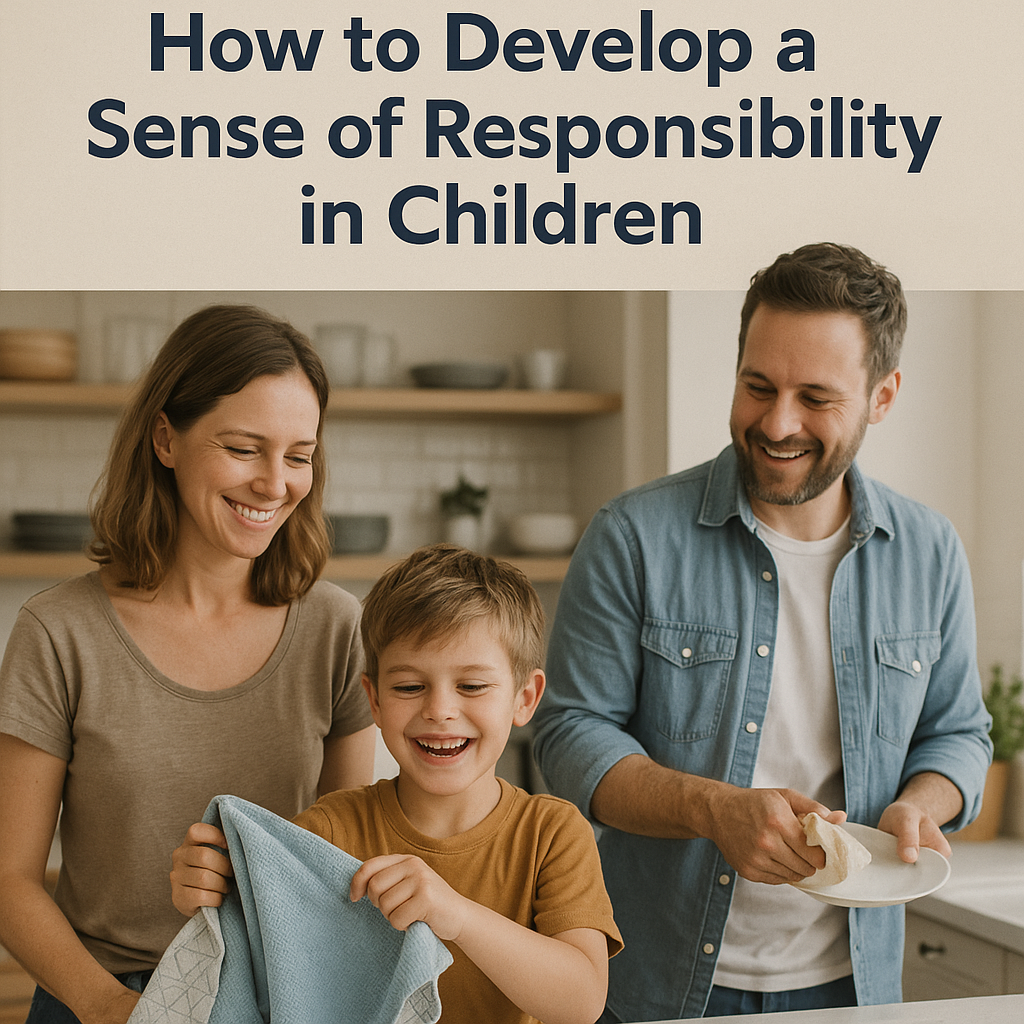Teaching responsibility doesn’t mean turning your child into a miniature adult. It means helping them build the confidence, independence, and awareness to care for themselves, others, and the world around them. The earlier you start, the more natural and empowering responsibility becomes.
In this article, you’ll learn age-appropriate, encouraging ways to nurture responsibility in everyday life — without pressure or punishment.
Why Teaching Responsibility Matters
When children learn responsibility, they:
- Feel capable and confident
- Develop self-discipline and accountability
- Learn to contribute to their environment
- Build independence and problem-solving skills
- Understand the value of effort and follow-through
Responsibility helps children feel they matter.
1. Start Small and Age-Appropriate
Responsibility begins with simple, manageable tasks that grow with your child.
Examples by age:
Toddlers (2–3 years):
- Put toys in a basket
- Help feed the pet
- Wipe spills with a cloth
Preschoolers (4–5 years):
- Set the table
- Water plants
- Help sort laundry
School-age (6–10 years):
- Make their bed
- Pack their own lunch
- Follow routines independently
The goal isn’t perfection — it’s participation.
2. Use Visuals and Routines
Visual charts and consistent schedules help children stay on track without constant reminders.
Tips:
- Create a morning or bedtime checklist with pictures
- Use magnets or sticker charts for motivation
- Keep routines predictable and simple
Structure builds autonomy.
3. Model What Responsibility Looks Like
Children learn best by watching you.
Demonstrate by:
- Following through on promises
- Taking care of your own belongings
- Admitting mistakes and fixing them
- Saying, “I’m responsible for this, so I’ll take care of it.”
Your behavior teaches more than words ever could.
4. Give Clear Instructions and Expectations
Be specific when assigning a task or setting a rule.
Instead of:
“Be responsible.”
Say:
“Put your shoes in the basket when we get home.”
“After dinner, your job is to clear your plate.”
Clarity avoids frustration.
5. Praise Effort, Not Just Results
Celebrate the attempt and the follow-through — even when it’s imperfect.
Say:
- “I saw how carefully you fed the dog — thank you!”
- “You remembered to clean your room without me asking — that shows responsibility.”
- “You kept trying even when it was hard. I’m proud of your effort.”
This builds intrinsic motivation.
6. Let Them Face Natural Consequences
Instead of rescuing or overcorrecting, allow small consequences to teach responsibility.
Examples:
- If they forget their lunch, they’ll be hungry until the next meal
- If toys are left outside and get wet, they learn to bring them in
- If they don’t study, they feel the result of a low grade
Let the experience teach the lesson — with empathy, not shame.
7. Involve Them in Family Contributions
Responsibility grows when children feel like they’re part of a team.
Try:
- Family “clean-up sprints”
- Rotating household tasks
- Making meals together
- Planning part of the weekend as a family
Everyone has a role — and that builds pride.
8. Be Patient and Consistent
Learning responsibility takes time — and repetition.
Expect:
- Forgetfulness
- Resistance
- Imperfect results
Stay calm, keep expectations steady, and trust the process.
Raising Responsible, Capable Kids
Responsibility isn’t just about chores — it’s about building character, confidence, and care. With loving guidance, consistent routines, and plenty of encouragement, your child will grow into someone who takes ownership of their actions and their place in the world.
And that growth starts with the small moments you share today.
